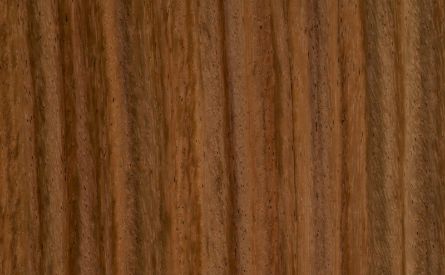CONACASTE
Parota / Enterolobium cyclocarpum

Local Names
Guanacaste, Tamboril, Orejó, Perota, Genicero, Jarina, Corotú, Orejero, Caro, Carocaro, Mexican Walnut, Guanacaste, Pitchwood, Elephant Ear, Tubroos.
Distribution & Tree
Mexico and southward through Central America to Venezuela, Trinidad, Guyana, and Brazil; often planted as an ornamental. It’s a climax species in subtropical, dry forest zones, often along dry hillsides or along streams, and is restricted to disturbed areas in wetter zones. The tree reaches heights of 18 to 30 m with a thick, short trunk up 180 cm or more in diameter. It’s notable for its large, spreading crown, widest when in open pasture. Older individuals develop small buttresses and produce large roots that run along the surface of the ground for 2-3 m. Indeed, it’s one of the largest trees of Central America.
Wood Appearance
Heartwood brown with various shadings, sometimes with a reddish tinge; sharply demarcated from the whitish sapwood. Grain is typically interlocked and texture coarse. It has a high luster. It’s been compared to walnut and Spanish cedar and is a worthy substitute.
Processing Properties
The wood is easy to work with hand and machine tools but fuzzy or chipped grain is common in planing as well as rough end-grain in shaping due to tension in the wood. It turns, nails and finishes smoothly (sealant is recommended). The wood seasons with little tendency to warp or check. It’s readily impregnable. Dust from machining is pungent and irritating to mucous membranes and may cause allergies.
Strength & Durability
A light to medium density wood, the heartwood is reported to have good resistance to attack by decay fungi; also resistant to dry-wood termite attack and Lyctus beetle. It is somewhat water resistant, lending itself to boat components.
Wood Uses
Corestock, pattern wood, paneling, interior trim, furniture components, boat building, boxes, slab, and decorative veneer.
Ecological & Social Importance
The common names across Mexico and Central America are likely corruptions of the Nahuatl word Cuaunacaztli, signifying “ear tree.” Immature pods are cooked as a vegetable. The seeds can be toasted and ground. The pods are highly palatable and nutritious, containing a sugary pulp readily consumed by livestock. The tree is often planted for shade for both livestock and agroforest crops, such as coffee and cacao. The trunk exudes a viscous liquid similar to gum arabic and is applied as a remedy for pulmonary infections. It’s been sought after in the US market for interior trim since at least the early 1970s.
| Reference Species | ||||
| Technical Characteristics | Conacaste | Eastern White Pine | Yellow Poplar | |
| Density | kg/m3 | 440 | 400 | 460 |
| Janka Hardness | kgf | 213 | 172 | 245 |
| Bending Stiffness (Modulus of Elasticity) | GPa | 8.5 | 8.6 | 10.9 |
| Bending Strength (Modulus of Rupture) | MPa | 59.6 | 59.3 | 69.7 |
| Crushing Strength | MPa | 37.2 | 33.1 | 38.2 |
| Shrinkage, Radial | % | 2.2% | 2.1% | 4.6% |
| Shrinkage, Tangential | % | 4.9% | 6.1% | 8.2% |
| Shrinkage, Volumetric | % | 7.1% | 8.2% | 12.7% |
| T/R Ratio | 2.2 | 2.9 | 1.8 | |
| Values determined at 12% humidity - Provided for reference only | ||||
|---|---|---|---|---|
DENSITY
JANKA HARDNESS
BENDING STIFFNESS
BENDING STRENGTH
CRUSHING STRENGTH
SHRINKAGE
Values are for reference only and cannot be guaranteed. Wood is a natural material and physical and mechanical properties may vary depending on age, genetics, and other factors. We encourage customers to consult the references provided in the bibliography. For further explanations of wood’s key technical characteristics, an excellent resource is the Wood Database with articles on Density (average dried weight); Janka hardness; Elastic Modulus; Rupture Modulus; Crushing Strength; Radial, Tangential and Volumetric Shrinkage.






